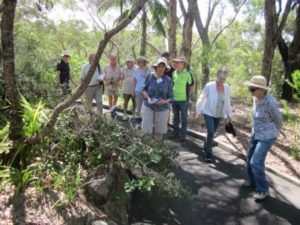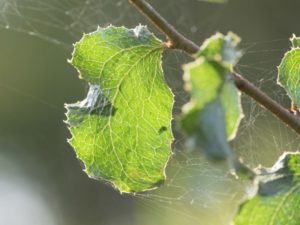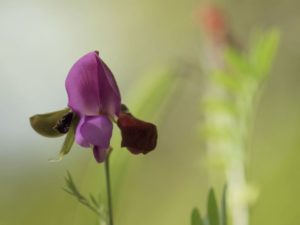
Three members of APS NSG went “on holidays” and ventured to Loftus on the balmy Saturday morning. We arrived just in time to join Rhonda leading the group on the guided tour of the beautiful Joseph Banks Native Plants Reserve.
As with Ku-ring-gai Wildflower Gardens, the initial development of this area as a native reserve was due to the foresight of keen conservationists some fifty years ago. Conditions have changed over the reserve’s life and plantings are reflecting these. For example, the rainforest area is no longer as cool and shady so the plants that once thrived are struggling, so other plantings are now occurring. Sutherland Shire Council and APS Sutherland Group have recently undertaken some major improvements of the Reserve.

At the meeting in the afternoon, the speaker, Geoff Doret, (Greenweb Officer at Sutherland Shire Council) presented How to Create a Wildlife Habitat at Home. Geoff has a challenging, yet rewarding job helping to implement biodiversity policies. His passion was obvious. He commented that some species are very commonly used as they are well adapted to urbanisation. These are important because it is through the common species and the wildlife that they support that the average person has contact with the natural world.
The habitat requirements and behaviours of the animals and plants affects the success rates of their existence, their survival and ability to prosper. Due to a decrease in habitat there has been a decrease locally in the numbers and diversity of small birds, frogs, reptiles, microbats and invertebrates. Usually the aggressive species are the more successful. Geoff stressed that a multilayered habitat is required and touched on the importance of ground level features (such as mulch, leaves, rocks and twigs), tree hollows and water features (ponds and creeks). He commented that pruning up, i.e. leaving a gap between the tree canopy and lower vegetation often helps.
Connected corridors and “stepping stone” gardens are extremely important for maintaining biodiversity. Good biodiversity has many health benefits including better air and soil conditions, pest control and the value of property also increases.

Some of the practical ideas that Geoff suggested were:
Creating “stepping stone” gardens.
Installing nest boxes- consider what your target species is as the box size and design varies accordingly.
Prune trees in a way that can maintain any hollows present or create a hollow.
Frog ponds can be any size and made from anything. Remember that frogs need a means of getting in and out of the “pond”. Plantings of strappy leafed plants, e.g. dianella, lomandra, nearby are recommended.
Plants with smaller flowers such as westringia and some hakeas attract smaller birds, while plants with larger flowers such as the larger grevilleas encourage larger birds. Interlocking, smaller spiky plants favour smaller species.
Native bee hotels: most species are solitary and require single holes with <10mm diameter. Suitable materials include terracotta or PVC pipes filled with bamboo stalks, mud with drilled holes or logs with multiple holes drilled in them.
Include rocks in the landscape.
Mass plantings are encouraged.
Provide bird baths: position out in the open a bit to protect the birds from predators.
Solar lights can be used to attract nocturnal insects. In simple words- provide HABITAT http://www.sutherlandshire.nsw.gov.au/Outdoors/Environment/Plants-and-Bushland/Greenweb http://www.sutherlandshire.nsw.gov.au/Outdoors/Environment/Plants-and-Bushland/Native-Plant-Selector
Text and first image: Jan Williamson; other images: Heather Miles
